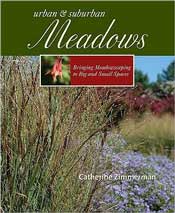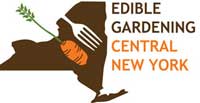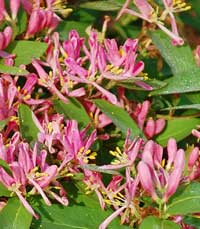Please consider supporting this film project by Feb. 20
|
 | |
Catherine Zimmerman's book on meadows
|
|
Kickstarter is a new way to fund and follow creativity. This organization provides a way to get interesting projects funded not by venture capitalists, but by everyday people -- like us habitat gardeners!
One project in particular is of interest to Wild Ones. Catherine Zimmerman, the author of a book on creating meadows and experienced videographer, wants to create a video on the topic. (Read her blog postpraising Wild Ones!)
Kickstarter works by having people pledge a certain amount to help fund the project, BUT if the total amount needed isn't reached by a certain date, the project is dropped, the pledge is not activated, and your credit card is not charged.
needs $20,000, of which more than $14,015 is now pledged by 182 backers. The remaining amount must be pledged by Feb. 20 or the project won't happen.
Bringing Nature Home, discuss "Why Native Plants." The Meadow Project page has additional links supporting the project. Please consider supporting this effort!
|
Designing with Native Plants Symposium
Fri-Sat, Feb 10-11
|  | The 2012 conference will explore the theme of Regional Identity for Upstate New York.
Our regional identity is reflected in, and shaped by, plans, designs and projects using native plants and ecologically based principles.
Registrants will include landscape architects, designers, educators, Master Gardeners, government employees, homeowners and anyone else eager to learn more about this growing movement. Speakers will include professional landscape architects, ecologists, horticulturists, contractors, educators, and conservationists. The two day format will include full length presentations and panel discussions. For more information and to register ... |
|
Annual Soil & Water Conservation District Plant Sale
|
 | |
Red oak in late fall
|
|
This can be an opportunity to get inexpensive plants, many of which are native, BUT not all (for example, rose of sharon, which we would not recommend).
Do some research before ordering-- but you should always do this before selecting plants!
Here are some of the natives offered:
Balsam fir, hemlock, red pine, white pine, American cranberry viburnum, American filbert, black cherry, paper birch, red maple, red oak, white oak, strawberry bush, sugar maple.
There are also conservation packs of ferns and a songbird mix of trees/shrubs.
(We do not recommend the "butterfly conservation pack.")
Plant descriptionsOrder Form |
| Our Habitat Garden |  |
Visit Our Habitat Garden website for information on providing habitat, earth-friendly gardening practices, plants, and various creatures here in Central New York. |
| HGCNY on Facebook |
As as more of us participate on our Facebook page, this will become a useful resource for asking (and answering!) local HGCNYers' questions about habitat gardening. Join in what can become a very useful conversation about habitat gardening in Central New York.
|
|
Join HGCNY!
|  |
Becoming an official member of HGCNY is easy: just join Wild Ones! When you're a Wild Ones member, you're automatically an official member of HGCNY. |
| Interested in Edible Gardening? | 
|
If you'd like to get information on Edible Gardening CNY, just email John to find out about edible gardening tours and programs.
|
|
Greetings!
 | | Non-native invasive honeysuckle |
You most likely know that Carol Bradford writes a popular column in the Post-Standard answering readers' questions about plants. But do you know that she also is a member of a New York State task force studying the impacts of non-native invasive plants? At our February 26 meeting, you can hear what she has to say about this important issue.
A what a fitting way to observe National Invasive Species Awareness Week February 26 - March 3!
WHEN: Sunday, February 26 at 2:00 PM
WHERE: Liverpool Public Library (Directions)
Free and open to the public.
Come and bring a friend!
 Cancellations? Cancellations?
In HGCNY's ten-year history, we've cancelled very few programs, but here in CNY, storms are always a possibility.
If the weather is bad, call Liverpool Library at 457-0310 to see if it's closed. Also, look for an email or check Facebook or our website for cancellation information.
 | | The native coral honeysuckle (Lonicera sempervirens) |
Native Plants Symposium
The annual Native Plants Symposium in Ithaca is this coming Friday and Saturday. Here's a .pdf file describing the event. For more information see the sidebar in this newsletter and also on the Symposium website.
~ Janet Allen
|
|
|
Our January native lawn program notes available
 Our January program with Krissy Faust discussing her work developing a native grass mix was very popular. Our January program with Krissy Faust discussing her work developing a native grass mix was very popular.
Many people requested further information and Ms. Faust generously allowed us to post both her PowerPoint presentation (a 10 MB file) as well as the list of plants. (They're also available on our HGCNY home page.) |
Save the date (Friday through Monday, February 17-20) to participate in the 15th annual Great Backyard Bird Count, sponsored by Cornell Lab of Ornithology and Audubon. This four-day event engages bird watchers of all ages in counting birds to create a real-time snapshot of where the birds are across the continent. Anyone can participate, from beginning bird watchers to experts. It takes as little as 15 minutes on one day, or you can count for as long as you like each day of the event. It's free, fun, and easy--and it helps the birds. Find out more about the GBBC. An instructional video is available. Here's a special page for kids! Highlights from the 2011 GBBC results. Binocular Basics from Audubon and Cornell Lab of Ornithology. |
 | A bee on a pussy willow flower
Will the emergence of plants and bees stay in synch?
|
Bees and plants waking up earlier
Over the last 130 years spring has arrived earlier and earlier, and with this change comes a change in when our bees emerge, according to a study published by the National Academy of Sciences (an organization established by President Lincoln in 1863 to provide independent advice on science matters). ... Several species of North American bees are emerging about 10 days earlier, with most of this shift taking place since 1970. ... Since bees are the world's most important pollinators of flowers and plants, any change in this crucial relationship could prove devastating: "85% of the world's plant species are pollinated by animals, and bees are widely thought to be the main animal pollinators," says Rachael Winfree , an entomologist at Rutgers University and a co-author of the study. "Therefore, if we lost bees, we would eventually lose most of the world's plant species. In addition, 75% of the world's crop plant species are pollinated by animals, again mostly by bees." ... "A shift in 10 days over 130 years as shown by the bees is a lot from the point of view of an insect, whose lifetime is measured in weeks," says Winfree. ... Read the whole article ...
We can help pollinators in our own yards
1) Create a bee-friendly yard
2) Participate in Project BudBurst
|
|
Heritage trees
 | Chestnut foliage
Photo: Wikipedia - Jaknouse |
Until the early 1900s, the American chestnut (Castanea dentata) and the American elm (Ulmus americana) were two important trees in our region.
Chestnuts were an especially important food source for wildlife as well as a source of beautiful hardwood for building. Elms were important as caterpillar host plants, and they graced many city streets throughout the country.
 | An elm-lined street in St. Paul, MN, before most of the trees were killed by Dutch elm disease.
Photo: Joseph O'Brien of the USDA Forest Service
|
But in the early 1900s, chestnut blight was noticed on a tree in the Bronx Zoo and a few decades later, it had killed up to three billion trees.
Dutch Elm Disease was first reported in the US in 1927 and slowly spread until many elms were destroyed, though there are still isolated populations surviving.
Today, several organizations are trying to restore these important heritage trees. SUNY-ESF is conducting some of this research.
Two 2-minute videos hosted by Terry Ettinger describe some of SUNY-ESF's work with:
- transgenic chestnut trees
- saving heritage trees
You can plant chestnuts NOW!
All of these projects are still in the research phase, but as the American Chestnut Foundation points out, there's no reason not to start planting "straight" American chestnuts now :
1. To preserve native germplasm (that is, hereditary material, like genes)
2. To accustom oneself to the care and maintenance that chestnut trees require. Side effects of planting and growing chestnuts can be several: - nut crops
- wood for crafts
- have a place where people can learn about the tree and, unfortunately, learn how the fungus can attack and kill a tree with no intervention.
Additionally, the American chestnut has the ability to resprout from rootstock. Because of this trait, one can have a "perpetual orchard." Read more... |
|
More fun ways to help birds (and their watchers)
 Cornell's Lab of Ornithology is developing a computer tool called Merlin to help people identify birds. Cornell's Lab of Ornithology is developing a computer tool called Merlin to help people identify birds.
What is Merlin?
When people notice a new bird, the first question they often ask is, "What bird did I see?" We're building Merlin to help people find the answer.
Merlin will be a new kind of bird identification tool--one that combines artificial intelligence with input from real-life bird watchers to produce an online "wizard" that helps people ID birds quickly and connects them to more information.
To build Merlin, we need to know how thousands of people remember and describe birds. You can help us by playing games that gather the information to help Merlin understand what bird watchers see. The more you play, the more you'll help Merlin become a true bird ID wizard.
We can helpIt's simple and fun (yes, it really is). And who better to train this computer tool than us habitat gardeners! There are two games to play, and each can take only a few seconds to play once, though chances are you'll keep playing for a few minutes.
One is Mark My Bird where you're shown a photo and answer a series of questions.
The second game is a Bird Color Challenge where you simply check up to three colors you see in a photo of a bird.
You're sharpen your observation skills while you're helping build a tool that will help people learn more about birds.
Train Merlin here.
|
|
|
|
|